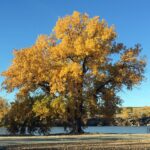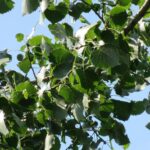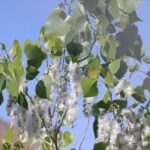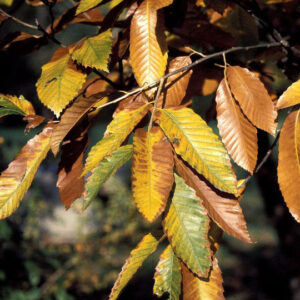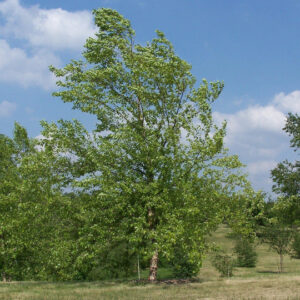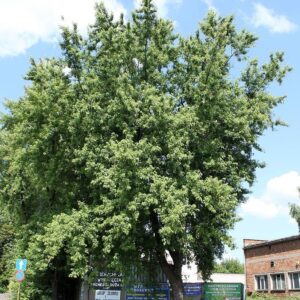The Eastern Cottonwood (Populus deltoides) is a large and fast-growing deciduous tree native to North America. Here’s some information about it:
-
Appearance: Eastern Cottonwood trees are known for their impressive size, reaching heights of 60-100 feet (18-30 meters) with a spread of 40-60 feet (12-18 meters). They have a broad, open canopy with a straight trunk and stout branches. The leaves are triangular in shape, with serrated edges and a shiny green color. In the fall, the leaves turn a vibrant yellow.
-
Growth: Eastern Cottonwood trees have a rapid growth rate, making them one of the fastest-growing trees in North America. They can gain several feet in height each year, reaching maturity in about 20-30 years.
-
Landscape Use: Due to their large size, Eastern Cottonwood trees are commonly planted in open areas such as parks, large landscapes, and along water bodies like rivers and streams. They provide excellent shade and can be used to create windbreaks.
|
Type: |
Tree |
|
Origins: |
Northwest and Eastern US; GA Native |
|
Height: |
50′ – 80′ |
|
Spread: |
35′ – 60’ |
|
Spacing: |
45’ |
|
USDA Hardiness Zone: |
2 – 9 |
|
Culture: |
Full Sun |
|
Bloom Color: |
Green |
|
Season of Interest: |
Fall, Year-Round |
MAINTENANCE NEEDS: Medium Maintenance. Susceptible to dieback, leaf spots, rusts, powdery mildew, and cankers. Common pests include caterpillars, borers, aphids and scale. Generally bad for urban use, as they are weak wooded, and the roots can buckle sidewalks or damage sewer lines. All-male cultivars have no cleanup.
LANDSCAPE USES: Accents or Group Plantings, Borders, Woodland Gardens, Wildlife Garden, Naturalized Areas, and Shade Tree.
COMPANION PLANTS: Creeping Phlox, Yew, Dwarf Lilac
IMAGES: Photo by Andrey Zharkikh, 20210525_094150, (2) Jay Sturner from USA, Eastern Cottonwood (Populus deltoides) – Flickr – Jay Sturner (1), CC BY 2.0, (3) Laurent Bélanger, Peuplier deltoïde feuillage, CC BY-SA 4.0, (4) R. A. Nonenmacher, Populus deltoides SCA-03469, CC BY-SA 4.0, (5) Photo by Andrey Aharkikh, Seeds, CC BY 2.0 , (6) Photo by Nick Varvel, Eastern Cottonwood
*As plants have ranges in appearance they may not appear as the images shown.


